Can I do physical work after having a stent put in my heart?
Old neighbor Master Fu, a stevedore, 46 years old, usually work quite tired, but in the last month, a work can not, chest tightness and chest pain. Can not continue to work at all, because we are neighbors, he knows that I am a doctor, asked me what is going on?
I told him that it might be a heart attack, angina, and needed to be seen quickly; Lao Fu's family was in average condition, relying on him as a main laborer, and his parents followed him, which was not easy, and when they heard that they had to go to the hospital to see a doctor, they were really reluctant to go.
Last Monday night, Lao Fu's daughter-in-law knocked on the door and said that Lao Fu was having a hard time, sweating profusely on his buns, and asked me what to do. Dr. Wang ran over to take a look, the old pay curled up, very painful. Dr. Wang told them to immediately call 120, and bring the sphygmomanometer to him to measure a blood pressure, blood pressure 150/100, so asked if there is nitroglycerin, but the old Fu family does not have this medicine. I told the old pay not to move, 120 immediately, about ten minutes after the old Fu well, feel experienced a life and death, after a while 120 came. Old Fu did not want to go to the hospital, said he was better.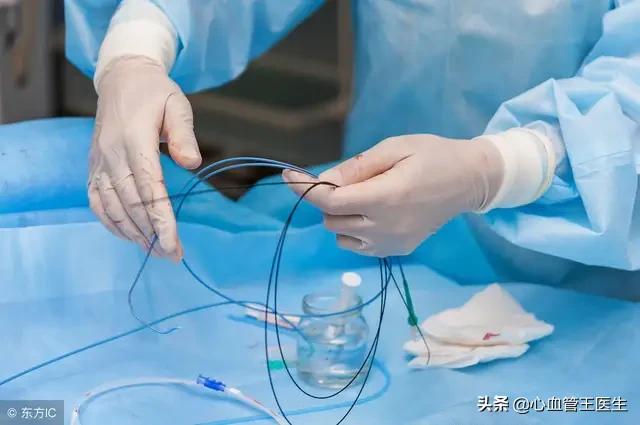
Dr. Wang told him that he must go, now well just temporary relief, before you have difficulty after activity Ken is exertional angina, now rest has begun to be difficult, indicating that the narrowing of the blood vessels is getting heavier and heavier, or even that is to be occluded, and can not be completely excluded from the myocardial infarction, you must go to the hospital.
After repeated persuasion, Lao Fu was hospitalized, I arranged for Lao Fu to do a cardiogram, suggesting that the left side of a blood vessel stenosis 99%, immediately blocked, thanks to timely detection. However, a domestic stent costs 7,500, plus other surgical instruments cost tens of thousands of dollars. For a family like Lao Fu's, this is indeed a burden. It just so happens that Dr. Wang is responsible for an experiment, which is a clinical study on the process of stenting, and informs Lao Fu whether or not he is willing to participate in the study, and he can install a stent free of charge. Lao Fu gladly accepted, because after all, it can save nearly ten thousand dollars. When sending Lao Fu back to the hospital room, Lao Fu still looked worried, asked him what was wrong.
Lao Fu said: a family, all rely on me, now put the stent, the future can not do manual labor, the child is still small, can not make money, I do not know what else, how to do this in the future?
Dr. Wang asked: Have you been able to go to work and work normally lately?
Lao Fu: I can't, I have chest congestion when I work, I can't do it at all.
Dr. Wang: Yes, before you didn't put the stent in, you couldn't work. Now you're worried that you can't work with the stent in place. What does it have to do with the stent in place?
Lao Fu: That's true, but I'm just worried about what to do in the future.
Dr. Wang: Don't worry, it's true that you can't work before you put the stent in, but after you put the stent in now the blood vessels are back to normal, the blood flow is back to normal, there's no myocardial ischemia, there's no angina pectoris, so of course you can work.
Lao Fu: Really?
Old Pay said while being overwhelmed with joy.
The old pay has now gone to work, has been the same as before, Dr. Wang still explains that the old pay to take good medicine, do not smoke and drink, not only is not good for the body, good cost. Eat a little lighter, remember to go to the hospital at the time of review.
The old payer had his stent put in, he couldn't do manual labor before, but now he has recovered and can do manual labor. Is he able to do manual labor after turning the stent?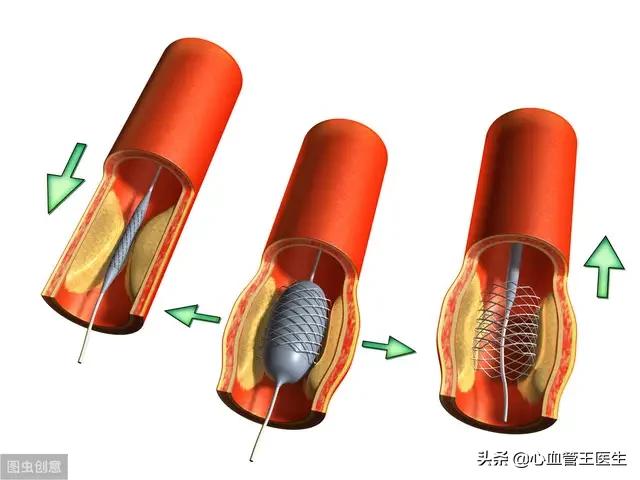
That's not true!
First, the ability to do physical work, must be based on their basic ability and physical quality at least, not that the stent is put, physical strength can increase.
Secondly, if it is angina and there is no cardiac function problem, like the old payer, after stenting, which improves myocardial ischemia, then it can be restored to the previous state of physical activity.
Third, if there has been a combination of cardiac insufficiency, such as after acute myocardial infarction, such as long-term myocardial ischemia, such as long-term uncontrolled hypertension, and so on, resulting in cardiac enlargement, then it must be carefully evaluated, and physical activity is generally not recommended. Because cardiac insufficiency will aggravate heart failure after physical activity.
Fourth, if a single stent does not resolve all the stenosis that must be resolved and there is residual stenosis, it is best to deal with all the lesions before evaluating the ability to do physical work, which can precipitate angina.
In summary, the ability to do physical work with a stent in place depends primarily on the presence of impaired cardiac function and assessing for residual stenosis. Excluding these two points, basically can return to the original activity and labor.
[Copyright Dr. Cardiovascular Wang]
Can I continue to do physical work after having a stent placed in my heart? I think this is something that many patients with stents are eager to know, especially those who are middle-aged and happen to be the breadwinner of the family, and may usually have a job that is mainly manual labor. If they can't do manual labor after the stent is installed, it will be a great disaster for the family.
So, can the heart put a stent in the end can continue to do manual labor? I can only say that each person's situation is different, even if they are all put a stent, the condition is also different, can continue to do, can only be analyzed on a case-by-case basis.
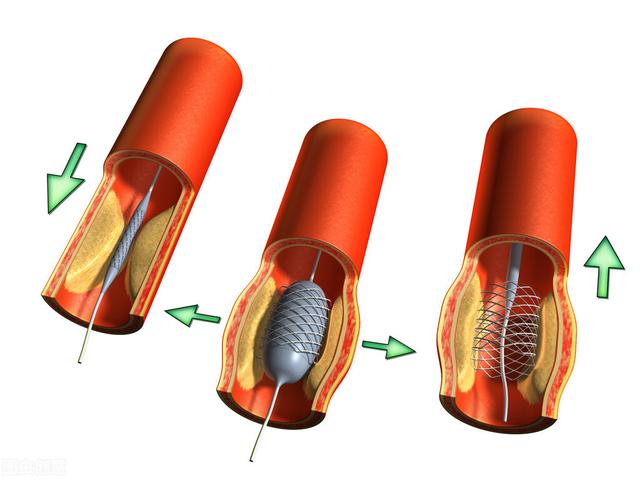
The brace itself doesn't interfere with doing physical work
- One of the main roles of the heart is to improve the quality of life of patients with coronary artery disease. For example, in some patients with coronary artery disease, when the plaque is large enough to cause a narrowing of the coronary arteries, when the narrowing is more than 70%, a person may experience exertional angina when he or she is active and emotionally excited.
- In this case, it is also not possible to do physical work, because the heart hurts when you exert yourself. In this case, the heart is fitted with a stent, which reopens the original blockage, so that the narrowing of the coronary arteries is also lifted. There will be no more angina when you move.
- So, a cardiac stent is an improvement in quality of life, making it possible to do physical work when you couldn't.

Can you continue to do manual labor?
1, acute myocardial infarction, installed stents, it is best not to do heavy physical activity
- In addition to improving quality of life, stenting is the safest and most effective emergency measure for patients who have had an acute myocardial infarction.
- But myocardial infarction patients, after the stent is installed, it is best not to do heavy physical activity. Because, myocardial infarction patients part of the myocardium has been infarcted, no role, on the whole heart function will certainly have an impact. Just the size of the impact is different.
- Doing heavy physical work is also a burden on the heart. Of course, it cannot be ruled out that there are some patients with myocardial infarction who have a really mild condition, just as if they had never had an infarction. In this case, discretionary consideration can also be given.

2, coronary heart disease patients, even if there is no myocardial infarction, but if the heart function is already not very good, it is not suitable for physical work.
- Some patients with coronary heart disease, although there has not been an acute myocardial infarction. However, coronary heart disease for a long time, there is no proper medication treatment, the heart long-term chronic ischemia, resulting in cardiomyocyte degeneration, fibrosis, resulting in new function slowly deteriorate
- Such a patient is not suitable for physical work, although his condition will improve with the fitting of a stent.
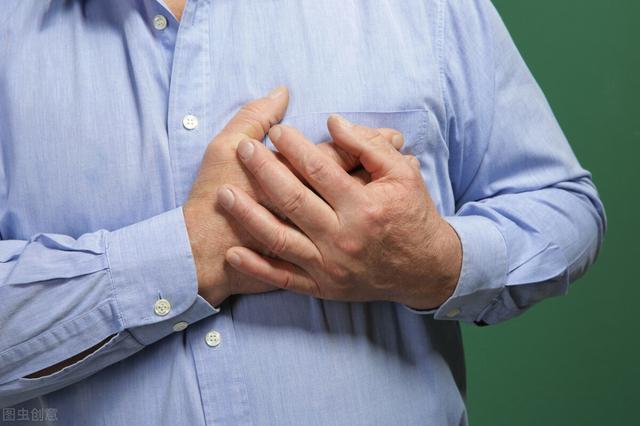
3. There is more than one blood vessel in the heart, and if there are still problems with other blood vessels, it is also not suitable for physical work
- There are three main coronary arteries in the heart, which are divided into the anterior descending branch, the right coronary artery, and the circumflex branch. If a stent is placed in one of these vessels because of severe stenosis, but there is still stenosis in the other parts of the body, it may still not be suitable for physical work.
- Because a bracket can only solve a problem in one place.
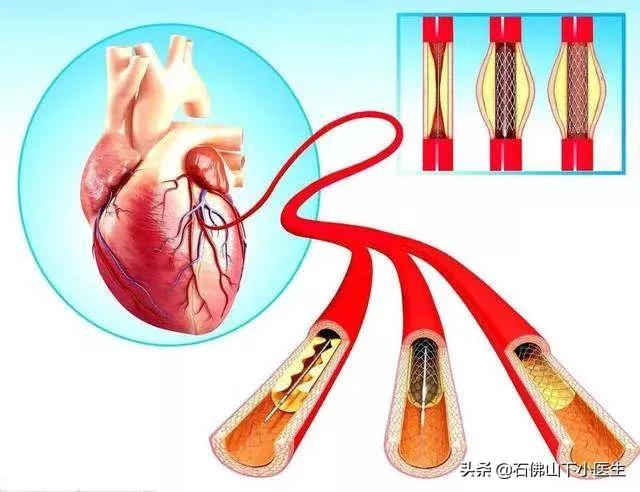
Summary:
- It's important to understand that it's not that you can't do physical activity after a stent is put in, it's that the condition itself allows it. Nor is the situation the same for everyone who has a stent.
- Does the ability to do physical work depend on how well the patient's heart is functioning? Does it depend on the other blood vessels? If only one blood vessel has a problem, and the heart function is fine. Then, of course, you can do manual labor. Because the purpose of the stent is to allow you to work again.
I am adhere to the medical science popularization of Chen Dafu, satisfied with my answer, please give me praise and attention, your support, is my creation, the greatest power.
The vast majority of people can perform normal physical activities after cardiac stenting, but there are a few things to keep in mind:
1. The time should not be too early, three months after the operation is appropriate
After the stent is implanted into the blood vessel, in-stent thrombosis is the most feared complication. Generally, three months after the procedure, the endothelial cells will cover most of the stent, thus greatly reducing the risk of in-stent thrombosis, and it will be safer to return to normal physical activities at this time.
2. The intensity should not be too high, using one's own subjective feelings and heart rate as the judgment standard
Everyone's physical condition is different, and the intensity of preoperative exercise is also different, so it is difficult to use a uniform standard to define how the intensity of postoperative exercise is considered appropriate. There are two simple ways, one is that there is no discomfort such as chest tightness, chest pain, shortness of breath, etc. after the activity, and the other is the heart rate after the activity, which can be calculated by a simple formula, as long as the heart rate does not exceed (180 - age), basically it is safe.
3. According to their own vascular conditions, according to their own strengths
In some people, there are only one or two lesions in the blood vessel, and after implanting the stent, the blood vessel is almost completely normal, so they can carry out more intense physical activities; while in some people, the lesions in the blood vessel are very diffuse, and the stent only solves the problem of severe stenosis, and there are still residual lesions, so the physical activities at this time must be controlled at the appropriate level.
4. Keep an eye out for changes in angina symptoms
Some patients have resumed normal physical activities after the operation, but with the prolongation of time, the original mild to moderate stenosis lesions in the blood vessels have progressed, or in-stent restenosis has occurred, and anginal symptoms will occur again during the same intensity of activities, which will then require timely consultation in the hospital.
You can also leave a message in the comments section about any other questions you may have about post-stenting, and I will try to give you a professional answer.
Hi everyone, I'm Comic Book Guy and I'm happy to answer your questions!
Can I do manual labor with a stent in my heart? On this issue, we have done the heart stent friends, are very concerned, because many people have no way to go to the heart stent, only in the case of serious blockage of the blood vessels in the heart, the heart ischemia is serious, only to install a cardiac stent, this situation, many people are the main breadwinner of the family life, in the face of the stent after the installation of the stent is still able to continue to engage in heavy manual labor, very much want to know. Therefore, today, Comic Talk will talk about this topic with you.
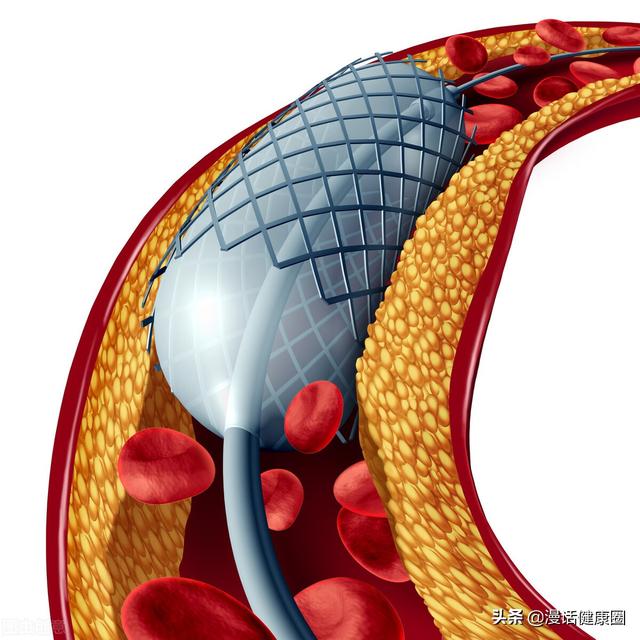
What's with the heart stent?
Before that, let's cover how the heart works?
The heart is the pump of our blood, through the role of the heart this "pump", is fully able to pump blood into all parts of the body, fully complete the exchange of substances; but the heart this "pump" also need nutrition and power, so, on the surface of the heart, there is a blood vessels So, on the surface of the heart, there is a blood vessel called coronary artery and coronary vein, these two blood vessels are responsible for providing nutrients and nutrients for the heart, but the lipids in the blood vessels, atherosclerotic plaque movement in the coronary blood vessels, it is very likely that they will block the blood vessels of the heart, resulting in ischemia of the myocardium, and if the blood vessels are clogged badly, then it is possible that it will result in ischemia of the local ischemia. This is where coronary heart disease comes from. If the coronary arteries on the surface of the heart are blocked more than 50%, the possibility of developing coronary heart disease is very high. And if the blood vessels are blocked at 80% or more, it is likely to cause localized cellular necrosis and ischemia.
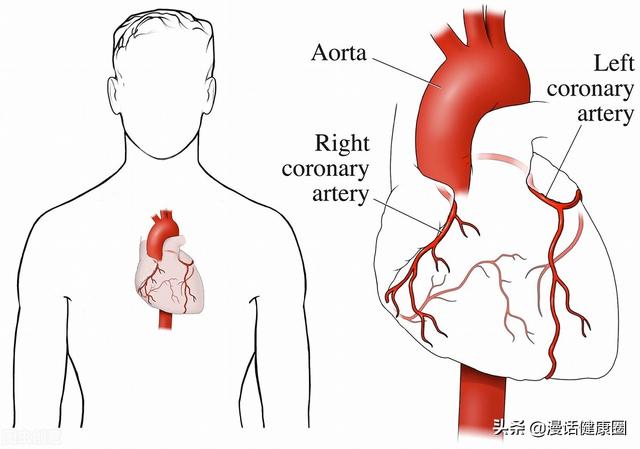
Therefore, at this time, we need to install stents to "hold up" the blocked blood vessels. The blocked blood vessels are narrowed and severely blocked, which will probably cause the blood to be impassable, therefore, we need to widen the blood vessels through stents in the downloaded place, which is why patients with severe coronary heart disease need to do stents.
The heart has a stent, which changes the blood supply to the heart, and it is at such times that there is relief from myocardial ischemia and prevention of heart attacks. So can you still do physical work after having a stent? To answer this question, it is important toGrading from severity of heart disease and physical activityTo come to a specific analysis.
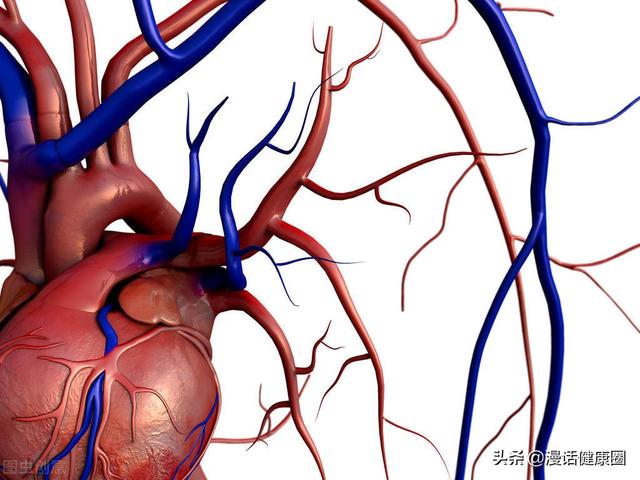
Severity of heart disease
If you aresevere myocardial infarctionBefore the attack, after the installation of cardiac stents, it is recommended not to do heavy physical work, because the purpose of installing a stent for this kind of severe myocardial infarction is mainly to improve the symptoms of ischemia, and before that, the heart may have already had a localized ischemic necrosis, so in this case, physical work will undoubtedly aggravate the burden on the heart, which will in turn lead to further damage.
In addition.coronary heart diseaseAs the heart may also be functionally impaired to a certain extent, in this case, even if myocardial ischemia does not occur, the ability of the heart to supply blood is not very good due to the presence of long-term coronary heart disease, and in this case, it is not possible to do overly heavy physical work.

II. Grading of physical work
Our Nutrition Society categorizes physical activity into the following three levels, which are:
1. Light manual work
The so-called light work is some activities that do not require a lot of strength, such as office work, vending services, lecturing, going up and down stairs and other activities;

2. Medium physical activity
Medium physical activity is student recess, biking, driving, and trolley installation;
3. Heavy physical work
Heavy manual work is mainly non-mechanical labor, industrial production, dancing, sports, etc.
In general, after the installation of the stent, it is recommended not to engage in heavy physical work, and in severe cases, such as the occurrence of myocardial infarction does not die, moderate physical work is also recommended not to do. Some light physical work is also good to do as much as you can.
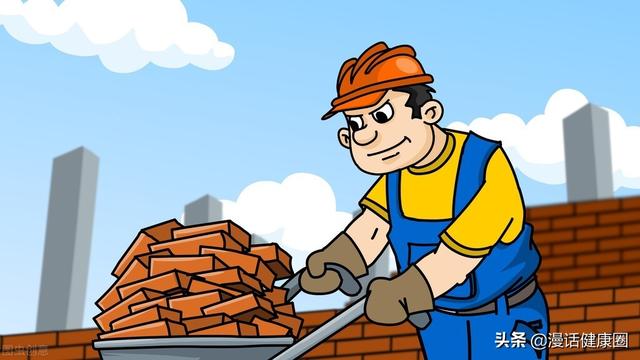
At present, the price of heart stent has been reduced, only need about 700 yuan, and no longer is the previous move is always 10,000 high cost, so, have a bad heart friends, must pay attention to diagnose as soon as possible, as soon as possible treatment, need to install the stent quickly installed, to avoid delaying the treatment brought about by the further damage to life.
To summarize, as to the stent after the installation can do physical work? There must be a their own assessment, when they have one of the above words, you must pay attention to, need to do is, of course, to reduce the risk factors for the development of coronary heart disease, there is a need to go to the hospital on a regular basis to check the other side of the installation of the stent, the specific situation?

That's it for today's sci-fi, I'm Comic Talker, if you like my writing, feel free to like, leave a comment and follow! If there are any questions, also welcome to leave a message to exchange!
Can I still do physical work if I have a stent in my heart? The answer to this question depends on the specific situation and indeed cannot be generalized. However, if the physical activity mentioned here includes physical exercise, then it should be said that all people with a stent in their heart, as long as they do not have severe cardiac insufficiency, can do physical exercise. This involves the content of cardiac rehabilitation in it. So why is it said that such patients should be analyzed on a case-by-case basis?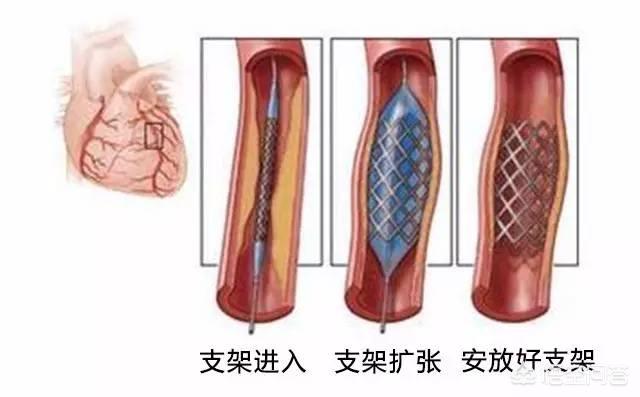
First of all, patients who have had a stent put in their heart have very different conditions, even though they all have stents put in. For example, some were diagnosed with coronary artery disease at the angina stage and given stents. These people have not had a myocardial infarction and their heart function has not been impaired. After the stent is put in, they are basically no different from normal people, except that they need to take a series of medications every day. Then, these people can perform exercises equivalent to those of normal people, such as moderate-intensity exercise, 30 minutes a day, 5 times a week. As for the form of exercise, there is no restriction, swimming, running can be done according to the ability.
As for those patients who have had myocardial infarction with stents put in, many of them have impaired cardiac function, and some of them have poorer cardiac function, in which case the time, intensity, and form of exercise should be strictly evaluated. For example, a strict cardiorespiratory function assessment is carried out first, and then according to the specific cardiorespiratory function, a professional cardiac rehabilitation doctor will arrange a specific cardiac rehabilitation program. However, it does not mean that these people absolutely can not have physical activity, in most cases physical activity can still have.
In short, people with stents in their hearts are not unable to do physical activities, physical activities can still be done, but for some more serious patients, it may require some more specialized cardiac rehabilitation doctors to develop a specific exercise program is better.
Hello, I'm Dr. Knowles Blue.
The most common symptom of coronary heart disease is angina pectoris, which often manifests itself as chest tightness and pressure in the heart area after activities or physical labor, which is the manifestation of myocardial ischemia. Generally speaking, this kind of angina pectoris can be gradually relieved in a few minutes after resting or can be quickly relieved by taking nitroglycerin. Some patients with persistent, severe chest pain, accompanied by profuse sweating, wheezing, etc., it may be myocardial infarction, which is the most common type of implantation of stents in the clinic, once an acute myocardial infarction occurs, the emergency sent to the hospital, in all probability, the implantation of a stent, to save the myocardium, to save life. The problem is that many people have heard that implanted stents are useless, and they have to take medication for a long time, and they can't work, is it true? Let's find out.

1. Stents are implanted to save myocardium and save lives
Once the blood flow of the coronary artery is interrupted, the part of the myocardium it supplies will experience severe ischemia and myocardial infarction will occur, if the blood flow can be restored in the shortest possible time, then it will be possible to make this part of the myocardium that is not completely infarcted to let it "revive", so once myocardial infarction occurs, it is necessary to seek medical attention as soon as possible, time is myocardium, time is life. Myocardium, time is life.
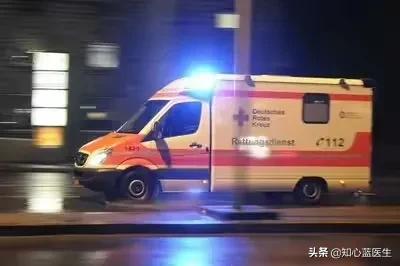
What happens if you don't open the bloodstream?If the blood flow is not opened in time, then this part of the heart muscle will lose its function, just like our 5 fingers, one finger is not functioning, relying on the other 4 fingers to move, and of course the function of the heart will be affected. If this part of the infarction is a critical part, then it may cause malignant arrhythmia, which is life-threatening. Just like our 5 fingers, if the broken finger is the thumb, then the remaining 4 fingers are not able to hold chopsticks.
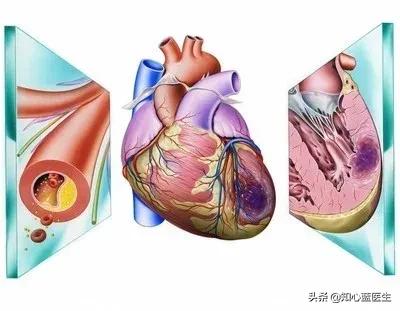
2、Implanting a stent still requires long-term medication?
About taking medicine, reminds me of a short video, a terminal cancer patient, the doctor told him his days are numbered, and then found a famous doctor, the famous doctor told him you have to take medicine for 10 years for this disease, he "ah, 10 years, have to take so long...", the famous doctor laughed, and he also suddenly pinpointed the meaning of The famous doctor smiled and he suddenly realized the meaning of "10 years".

Do I have to take medication for a long time after the stent?This is a very common problem. A lot of patients mistakenly think that they don't need to take medication after the stent is put in place, but this is actually a big misunderstanding. The stent is not a cure for coronary artery disease, but only to restore the sudden interruption of blood flow, coronary artery disease still exists, so you still need to take long-term medication, and then implanted stents in the early stage (1 year), in order to prevent the stent re-obstruction, you need to take more medication (double antibiotic) than without stents.
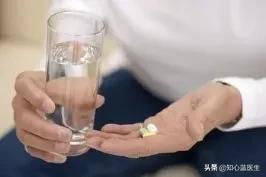
3. Can I still do physical work after stenting?
I think it comes down to two things, one is blood flow to the heart and the other is the overall function of the heart.
(1) Cardiac blood flow:As mentioned earlier, patients with coronary artery disease have angina when they are active, which is a lack of blood supply. After the implantation of a stent, the blood flow becomes smoother, so naturally, they can do more physical work than when the stent was not implanted.
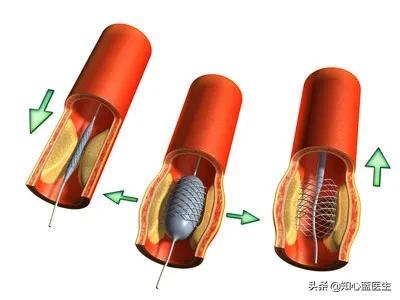
(2) Overall cardiac function:If the treatment after myocardial infarction is not timely, blood flow opening is not timely enough, then this part of the infarcted myocardium can not be recovered, then the function of the heart will be affected, even if the stent is implanted again at a later stage, then it can only save those upper infarcted myocardium. The "affected heart function" is actually different degrees of heart failure, even if the stent is implanted, it only improves part of the heart function, and the physical activity ability is definitely impaired.

To summarize, coronary artery implantation of stents is an important means of treating acute myocardial infarction, which can quickly open the blood flow, save the myocardium and save the life, and long-term medication is still needed after stent surgery. If the treatment is timely, the blood flow is restored satisfactorily, and the heart function is not impaired, you can still do physical work; if the treatment is not timely, and the heart function is impaired, then naturally, you cannot do physical work; in any case, the ability of physical activity after stenting varies from person to person, and it should be done according to one's ability.
Follow Dr. Know Your Heart Blue to learn more about the heart.
Can you actually do physical labor after cardiac stenting? Doing the following four things is not a problem!
Before I answer that question, let me share with you a patient of mine.
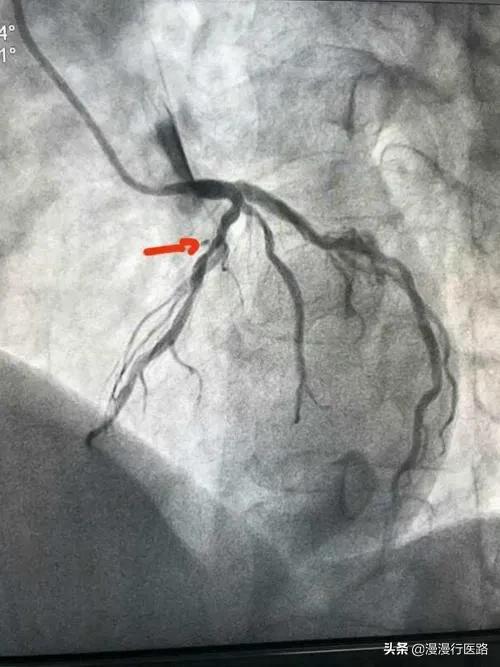
Mr. Zhang, 50 years old, is a contractor, usually have a lot of socializing, itself has obesity, high blood pressure and other basic diseases. In our hospital six months ago diagnosed with coronary heart disease, at that time it Mr. Lin wanted to do heart stent, but after examination found that the degree of stenosis is less than 80%, and did not choose to do the stent, during the period of time has been for drug maintenance. Just the night before last, Mr. Zhang felt chest tightness, chest pain symptoms worsened, without delay, rushed to call 120 to our hospital, just to meet me on night shift.
Mr. Zhang saw me and said, "Doctor, my angina is particularly severe, is my coronary heart disease again?"
I then arranged for the relevant tests, and the imaging showed that the left coronary artery stenosis had reached 85%, requiring stenting.
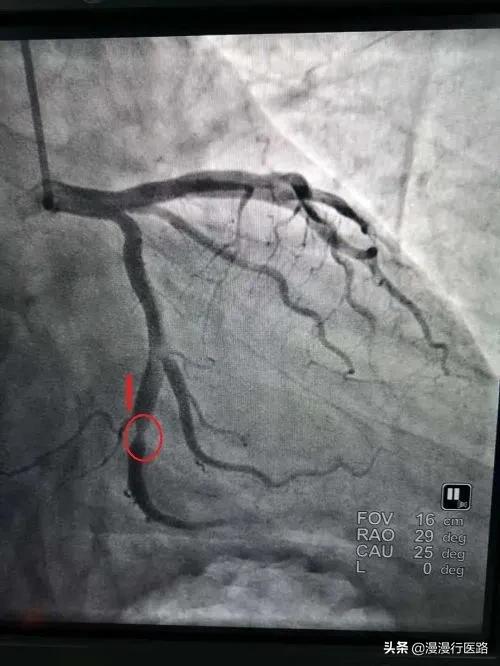
I explained to Mr. Zhang, "Mr. Zhang, the degree of stenosis of your left coronary artery, has reached 85%, and the last comparison is obviously serious, to meet the criteria for the release of stents, you consider it."
Mr. Zhang said, "Don't think about it, do the surgery, you've explained it to me before.Can the doctor's brace give me the option of importing a better one?"
I said, "Mr. Chang.Domestic stents and imported stents are not much different from each other, no matter in terms of service life, therapeutic effect or safety and practicality. When choosing between domestic or imported stents, in most cases the choice is still based on the patient's own situation."
Mr. Zhang said: "O, so it's like this, I see. By the way doctor I still have some questions, after I have a stent, can I still continue to do my job? , because my work is all physical work, I heard some people say that after a stent is put in the heart, you can't do physical activities."
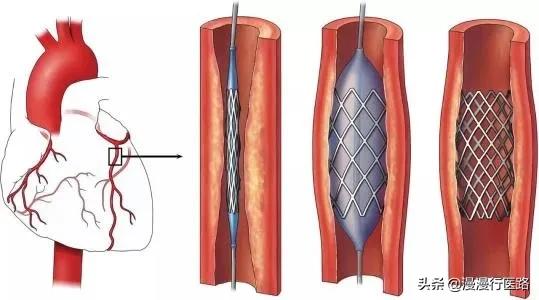
I said, "Mr. Zhang, the situation you mentioned, or according to the post-operative situation to observe, post-operative recovery is good, and to quit all your previous bad habits, and to adhere to the medication, to be able to recover is no problem."
Mr. Zhang said: "Well thank you doctor, before you give me advice, keep not a few days, I'm as a whisper, the medicine is not on time, I feel that the onset of this time and I have a relationship with these habits, for the sake of future health, must be these change habits to change."
Mr. Zhang is now actively cooperating with the treatment, wish him a speedy recovery put.
What do my friends think after reading about Mr. Zhang? As a doctor, let me say my opinion.
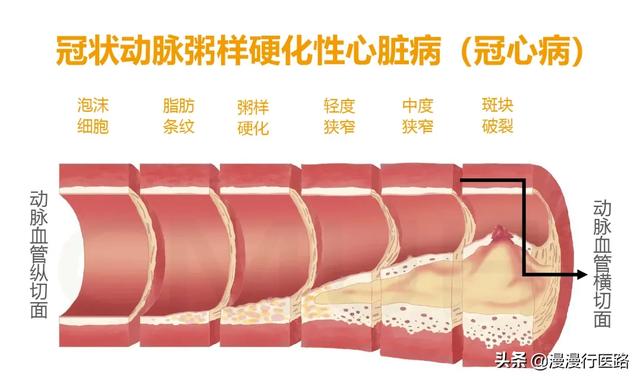
1. After Mr. Zhang was diagnosed with coronary artery disease, he did not follow his doctor's orders for treatment
When the disease has just recovered, it is considered to be well, as Mr. Lin himself said, as a whisper. This is also an important factor that triggers the recurrence of coronary heart disease.
2, after the diagnosis of coronary heart disease, especially can induce angina pectoris, drug treatment is indispensable.
This is because medication is the only way to fully intervene in the occurrence and development of coronary atherosclerosis, which is the fundamental treatment for coronary heart disease.As a doctor, the best approach is to fully communicate and exchange ideas with the patient, so that the patient fully recognizes his or her condition and the importance of long-term treatment, maintains a good state of mind and healthy lifestyle, and actively cooperates with intensive drug therapy.
3. As Mr. Zhang asked, is an imported cardiac stent necessarily better than a domestic one?
In fact, not only Mr. Cheung, most of us would also think that imported things would be better than domestic ones. The same is true for cardiac stents. In fact, this idea is wrong, relative to the first few years of China's medical technology development is still to be improved, but in recent years, China's overall level of medical care has improved significantly, such as domestic stents and imported stents, whether in the use of years, therapeutic effect or safety, practicality and so on, there is not much difference. The fundamental reason is that the patients have to choose according to their own situation.
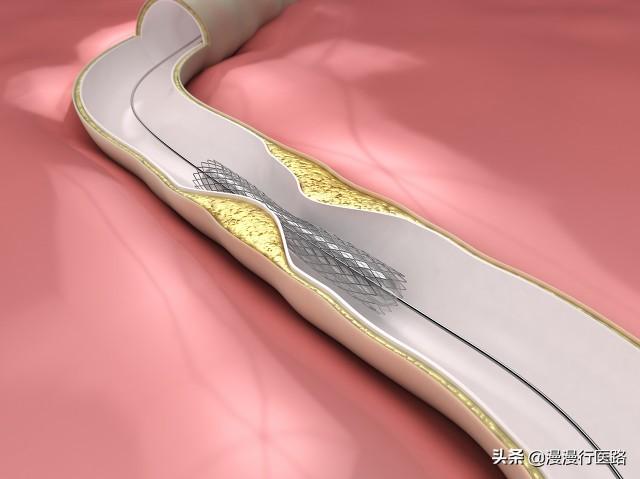
Can you actually do physical activity after cardiac stenting? Doing the following four things is not a problem.
1. The medicine cannot be stopped.
Usually, after stent surgery, patients need to use more medications, and at the same time, depending on the individual's different physique, there will be different side effects, such as fatigue, drowsiness, and so on. In most cases, we don't need to worry too much.
If there is bleeding, or intense discomfort in areas like the gastrointestinal tract, etc., it is important to seek medical attention as to whether or not a change in medication or other aspects of treatment are needed.
Suggestion: If you have other underlying medical conditions that require you to stop using coronary medications, do not stop using them blindly, but ask your doctor first.
2. Make regular inspections.
Blood pressure, blood glucose, blood lipids, blood viscosity and other tests should be rechecked about six months after stenting, and a full recheck should be done after one year. Especially patients with hypertension, diabetes and cerebrovascular disease should be well examined regularly, depending on the situation.
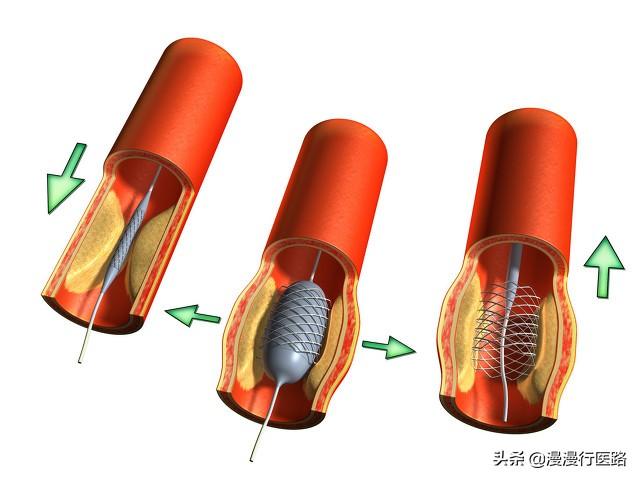
3. Develop good living habits.
Heart disease patients are in fact required to adopt good living and eating habits, whether or not they have undergone stenting procedures.Ensure adequate sleep and rest, eat less food high in salt, oil and fat, quit smoking and drinking, and keep a happy mood.It not only facilitates disease prevention, but also helps with post-operative recovery.
The diet after cardiac stent surgery should increase the intake of calories, proteins as well as vitamins to promote a speedy recovery after cardiac stent surgery. You can eat more fiber-rich foods such as vegetables, fruits as well as soy products.
4. Exercise properly
Patients after cardiac stent surgery should maintain appropriate exercise, which will help the recovery of the condition, you can choose some slow walking, jogging and other sports, but the exercise must pay attention to the combination of their own situation, not blindly carry out a lot of exercise.
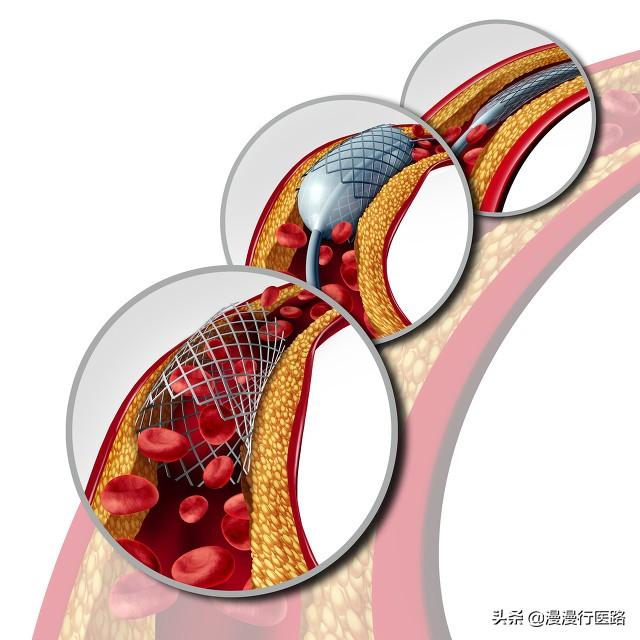
Summarize: Patients after cardiac stenting have good postoperative recovery, no adverse reactions, a good routine and dietary habits in life, for appropriate physical activity can still be done.
Do you need a stent if you have a bad heart? Not really! When can you get a heart stent?
First, the patient's blood vessel diameter should be at least ≥ 2.3 millimeters in order to carry out cardiac stenting, if the blood vessel is smaller than this diameter, then do heart stenting surgery to play a role is not obvious, as the doctor in this case will not go to recommend that everyone go to do the operation.
Second, cardiac stenting will only be recommended if the patient has ≥80% or more stenosis, which means that it makes sense to do cardiac stenting when the patient's blood vessels are blocked by at least 80%.
Third, patients have symptoms of angina pectoris or myocardial infarction before they undergo cardiac stenting, because cardiac stenting is a specialized procedure for such patients.For these patients, time is of the essence, and any delay is likely to threaten the patient's life. In order to increase the success rate of resuscitation and improve the survival rate of these patients, cardiac stenting is the way to go.
Summary: From the above three points, we can see that cardiac stent surgery is not a suitable surgery for all heart disease patients, and, how many stents to be put in cardiac stent surgery also needs to be decided according to the patient's condition.
Cardiac stenting is an interventional procedure specifically designed for patients with coronary artery disease, in which a blood vessel is punctured and a cardiac stent is delivered to the site where it needs to be placed. By supporting the blockage, it serves to improve the blood supply to the patient's heart.
The heart should not do physical work if a stent is placed. After all, the stent does not belong to your body originally, it is added in, and there needs to be a time of adaptation and integration, which also takes a long time.
Some people are concerned about whether physical work could cause the stent to displace or fall off. This is very unlikely, but patients who have had a heart stent are advised to avoid physical labor for a year and take good care of it. After about a year, the endothelial cells will cover the stent. In other words, the stent has grown into the flesh. At this point, the stent is like the bone around the blood vessel, and there is a good fusion, so you can live a relatively normal life, but still try to avoid physical labor, health is the most important thing, and it is not cost-effective to have a relapse.
If sometimes you have no choice but to do something physical, be careful not to do heavy work or use a lot of force. I have a friend who had a heart stent, went to play basketball on a whim, stayed on the court for half an hour, and preferably collapsed in a rebound grab and never got up. So make sure you don't exert yourself suddenly to avoid your heart not being able to take it.
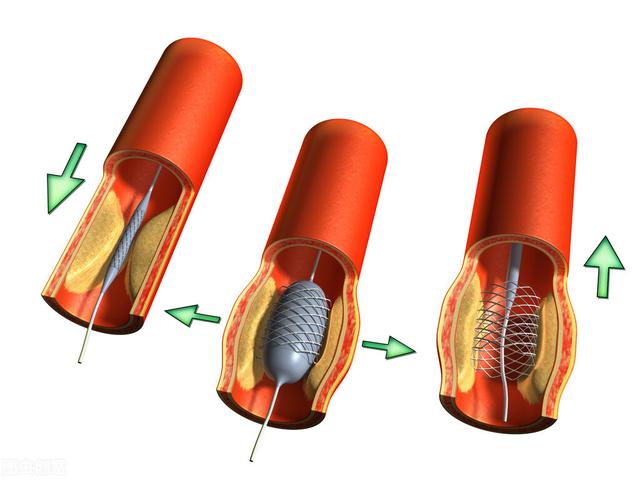
Hello! In this case, it is not recommended to continue to engage in physical work. There are many cases of heart attack after stenting due to heavy physical labor. Why is manual labor not recommended?
I. Weak heart foundation
First of all, for patients after cardiac stenting, even though the problem of heart ischemia has been solved by placing a stent, the heart's ability to tolerate it is a little bit poorer than that of a healthy person because of a history of myocardial ischemia and damage to the heart muscle cells. Moreover, stents can only solve the problem of myocardial ischemia in the short term for a few years, but they are not a permanent solution, nor can they restore your body to the level of a healthy person, so post-procedure maintenance is particularly important. This includes reducing physical work, especially manual or heavy labor.
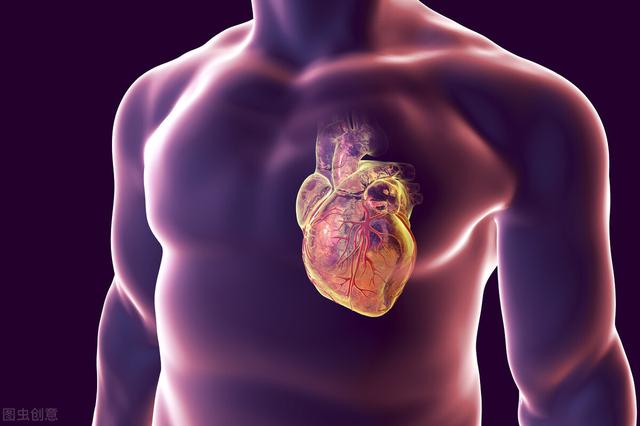
Second, overwork is prone to relapse
Proper physical activity enhances heart function and strengthens the tolerance capacity of heart muscle cells, such as aerobic exercises like walking, tai chi and yoga. Proper physical activity is a kind of aerobic intermittent exercise that enables your body to strengthen muscle movement at the same time, by increasing the metabolic capacity of muscle cells. However, long-term physical labor will continue to consume the body's energy as well as increase circulatory metabolism, which requires a higher sustained output capacity of the heart, which aggravates the load on the heart and easily induces myocardial ischemia. Even after surgery to put in a stent, once the heart is overloaded, it is easy to induce heart disease again. This is just like a repaired car engine, if it continues to be overloaded and used, it will surely have problems again soon, and the condition will only get worse and worse after the recurrence. To make it run normally and for a long time, you need to pay special attention to maintenance.
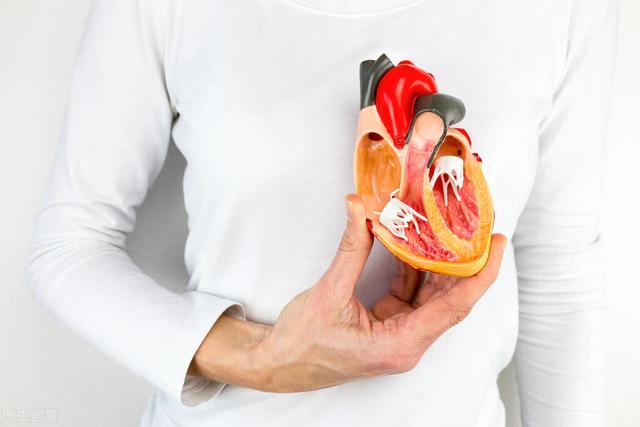
Therefore, the first thing you need to do after having a stent is to take good care of your heart, which includes taking antiplatelet drugs regularly, ensuring a normal routine, and maintaining a healthy diet. Secondly, physical exercise should be carried out as long as the body can tolerate, so as to achieve the goal of strengthening the body in a gradual and orderly manner.

What can patients do to maintain a healthy lifestyle after stent placement?
1, dietary choice of vegetable fats and oils, cooking methods used more steamed, boiled, smothered stew and so on.
2, should not eat often or a lot of animal offal, fat meat, squid, egg yolks, crab roe and other high cholesterol content of food.
3、After stenting, we should pay attention to controlling blood sugar and eat more vegetables and fruits, including tomatoes and cucumbers. Diet should be light, supplement high-quality protein to fish and meat-based.
4. Do not overeat or eat too much.
If the content of the article is helpful to you, please help to like it, thank you!
For more health science information, please follow@Apricot Grove Clock
Share a little bit of healthful trivia for your health every day!
Can I do physical work after having a stent put in my heart?
Coronary heart disease is a common chronic cardiovascular disease nowadays, and many patients with coronary heart disease need to be installed with stents to ensure the smooth flow of coronary arteries after angina pectoris or heart attack. However, patients are more or less concerned about heart stents, some feel that they need to take medication for a long period of time after the installation, and some think that they can't do physical work after the installation of stents, and their movement is restricted.
In response to this question, Pharmacist Wang shares a case study that may shed new light on cardiac stents.
48-year-old Mr. Yu is a hypertension combined with coronary heart disease patients, he is usually engaged in manual labor, but after the disease, work for a long time, feel uncomfortable chest tightness, to stop and rest. He thought it was not a big problem and never went to the hospital for checkups until one day when he had a sudden angina at work. After being sent to the hospital, the doctor gave him sublingual nitroglycerin to relieve it.
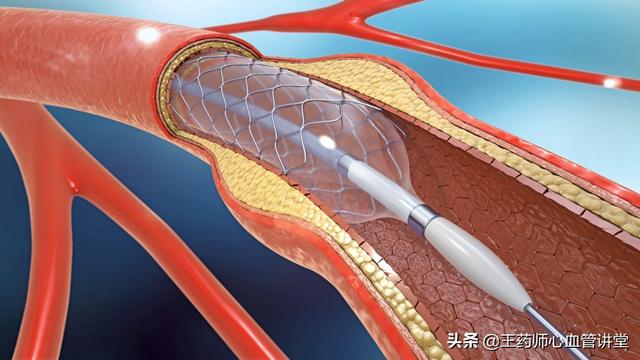
The doctor suggested Mr. Yu to have a checkup and put a stent to prevent heart attack. Mr. Yu was very hesitant, putting in a stent would cost at least tens of thousands of dollars, and he would have to take medication after the operation, and he was afraid of losing his job because his work was manual labor.
The doctor answered Mr. Yu's questions. Mr. Yu's coronary heart disease has developed to a more serious degree, this angina attack is a signal of coronary artery blockage, the next time may be a heart attack. If Mr. Yu continued to engage in physical labor without a stent, his life would be in danger in case of an infarction; but with a stent, because Mr. Yu's condition was discovered in time, no myocardial infarction occurred, and his heart function was not yet impaired, as long as he adhered to the medication under the doctor's guidance, and the blood flow supply was restored to normal, he could continue to engage in physical labor.
The ability to do physical work depends on the patient's heart condition
After reading Mr. Yu's experience, we can know that each coronary heart disease patient's condition is different, some have had myocardial infarction, or long-term myocardial ischemia, resulting in impaired cardiac function, heart enlargement, etc., this kind of patients put stent or not put stent is not recommended to carry out physical labor, easy to aggravate the condition.

And like Mr. Yu, who is in good health and has never had a heart attack, if a stent is put in in time, the blood supply to the heart can be restored, and together with medication and healthy lifestyle interventions, he is fully capable of engaging in physical work.
Not only can you do physical work, we also encourage this group of patients to actively engage in physical exercise, recommending 30 minutes of moderate-intensity aerobic exercise per day, such as brisk walking, jogging, swimming, etc., which is basically the same as normal people. Pay attention to carry first aid medication with you to prevent angina pectoris.
I am Pharmacist Wang, dedicated to helping you manage your body by explaining complex and difficult disease knowledge in plain words. Your kudos are my greatest motivation! Also, if you have family members with heart stent-related troubles, please pass this article on to them!
This question and answer are from the site users, does not represent the position of the site, such as infringement, please contact the administrator to delete.